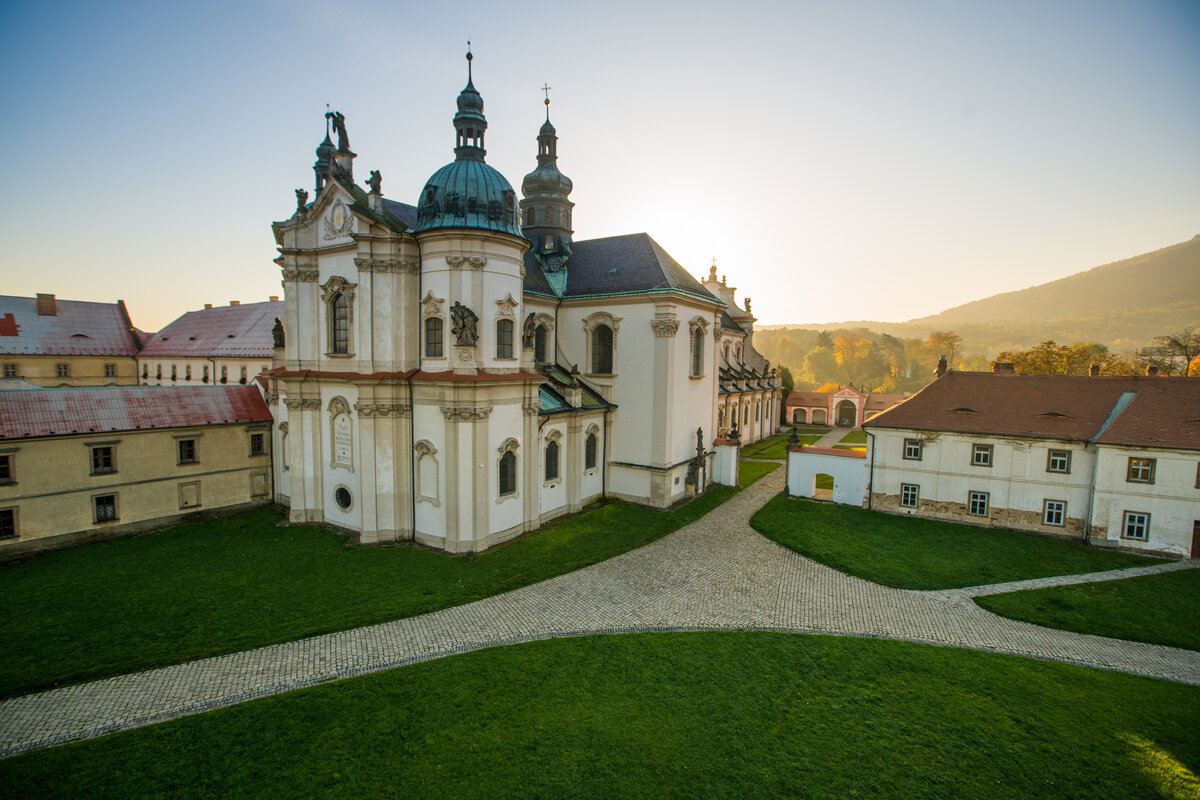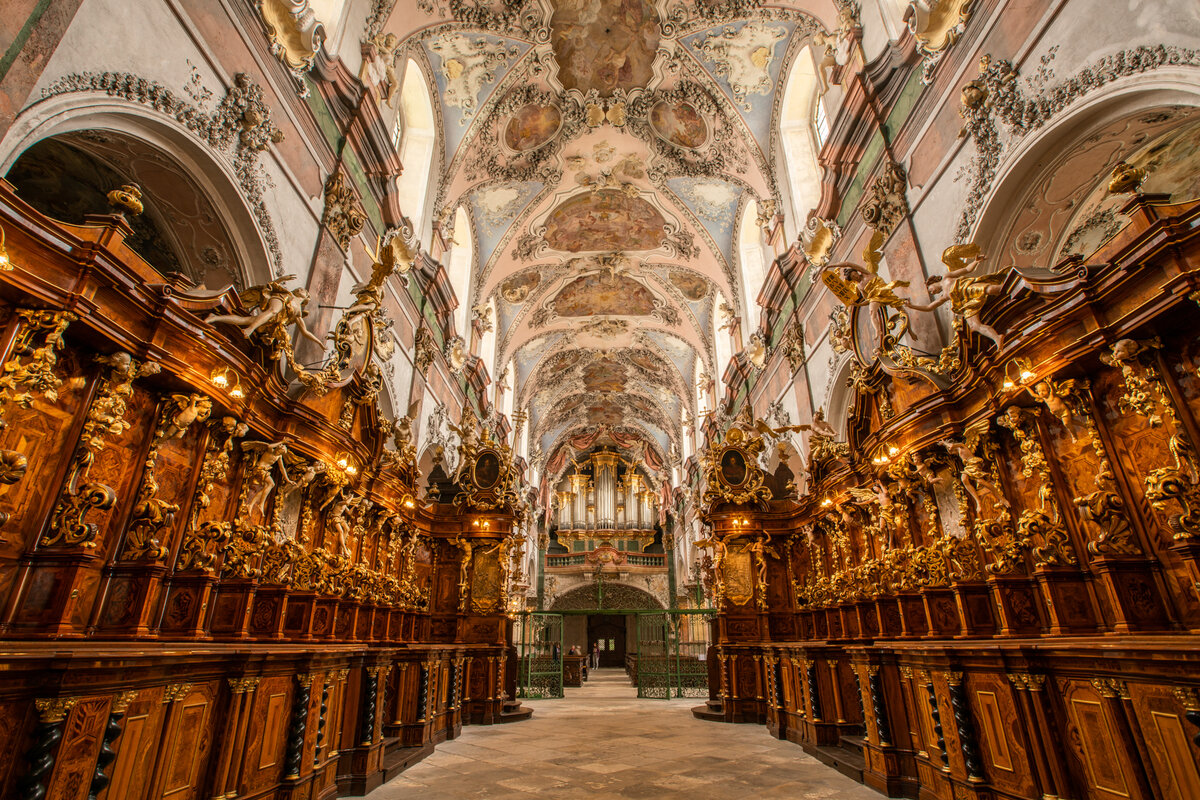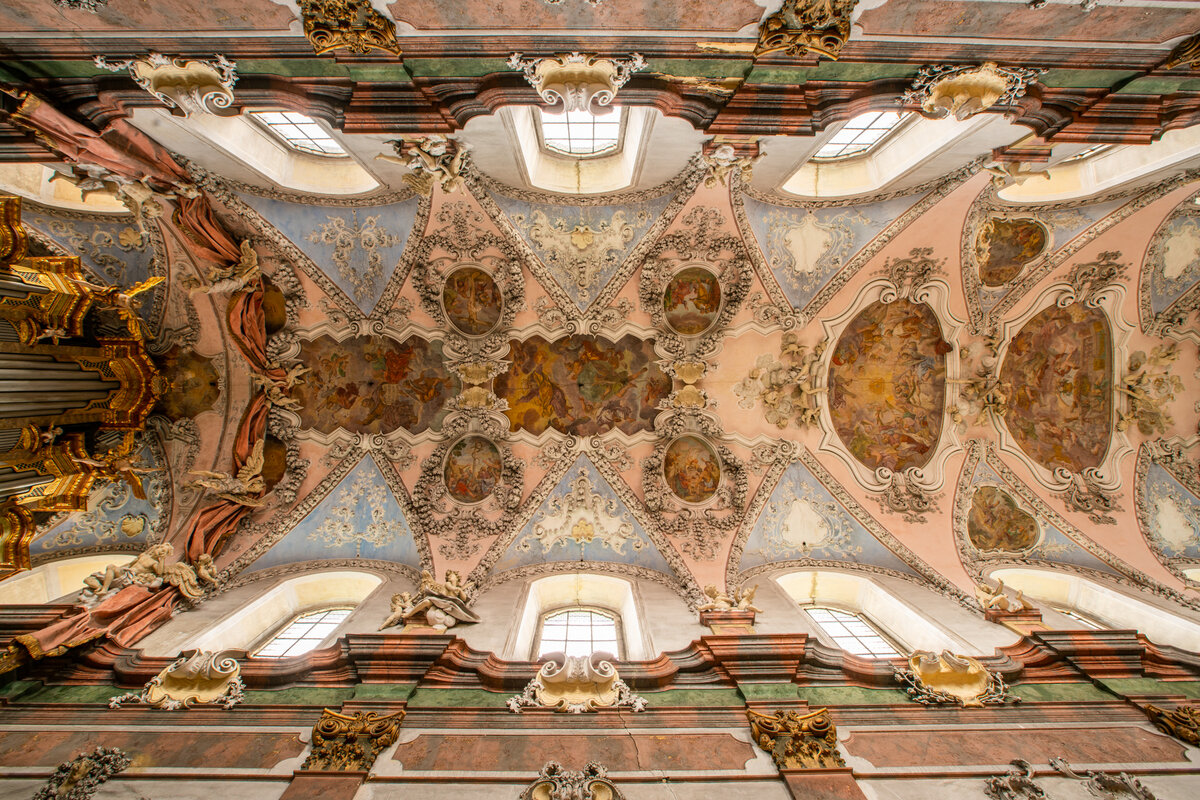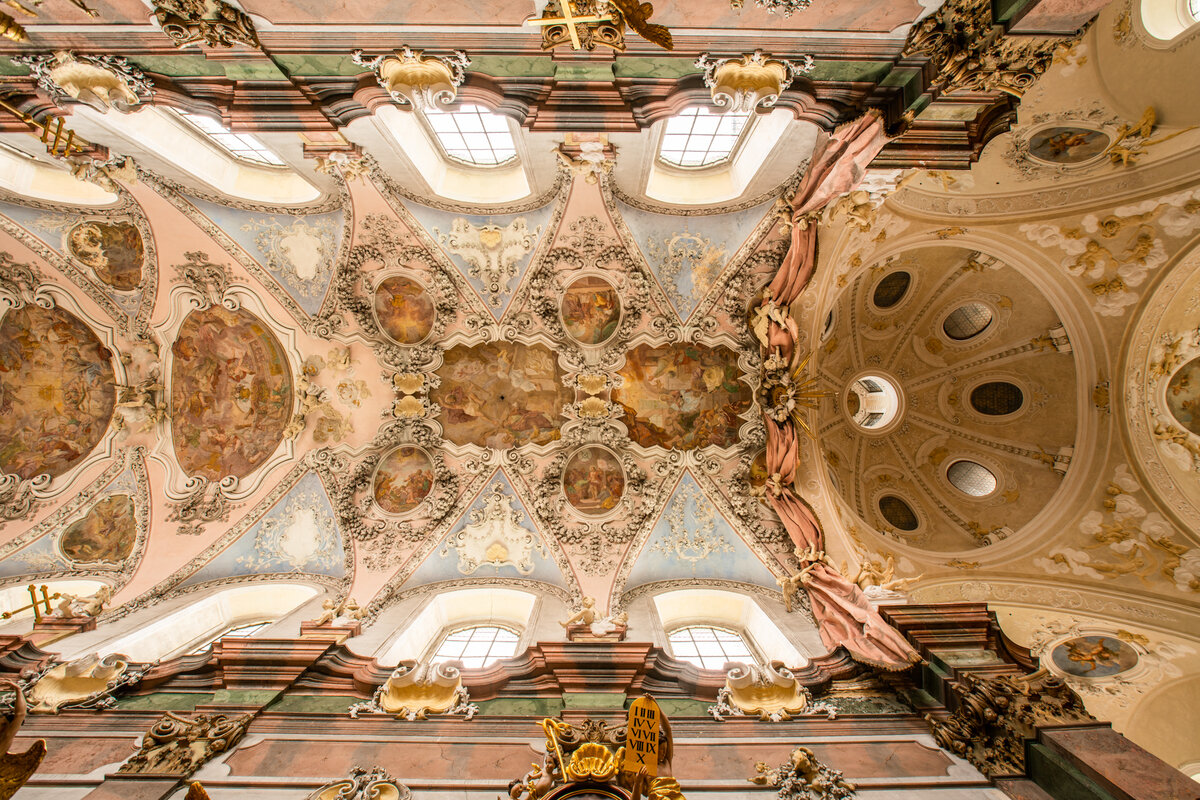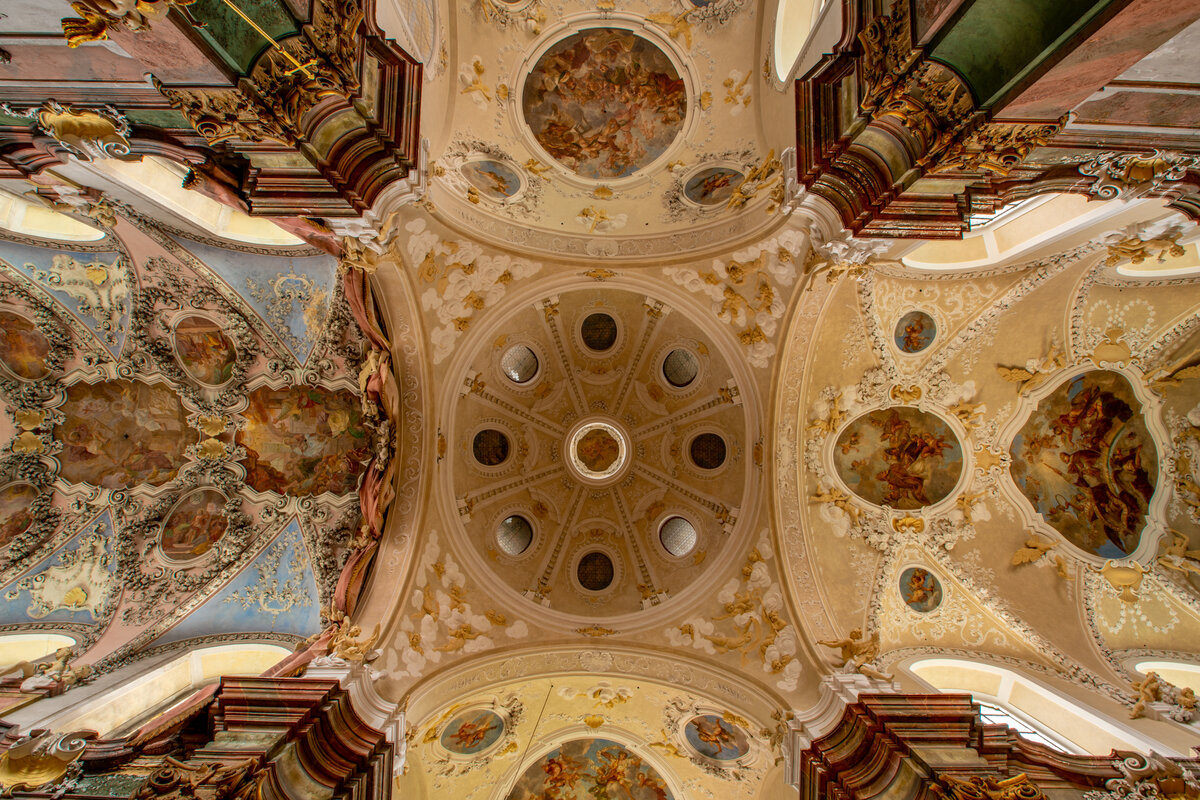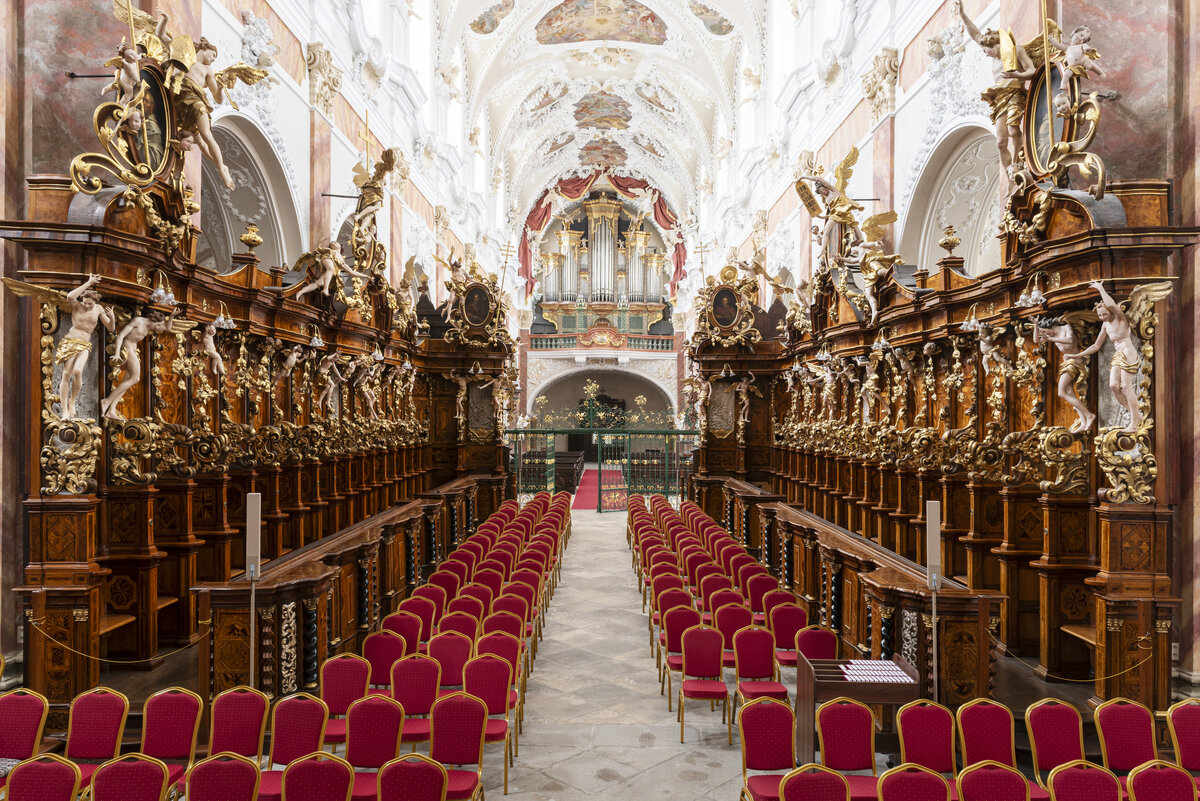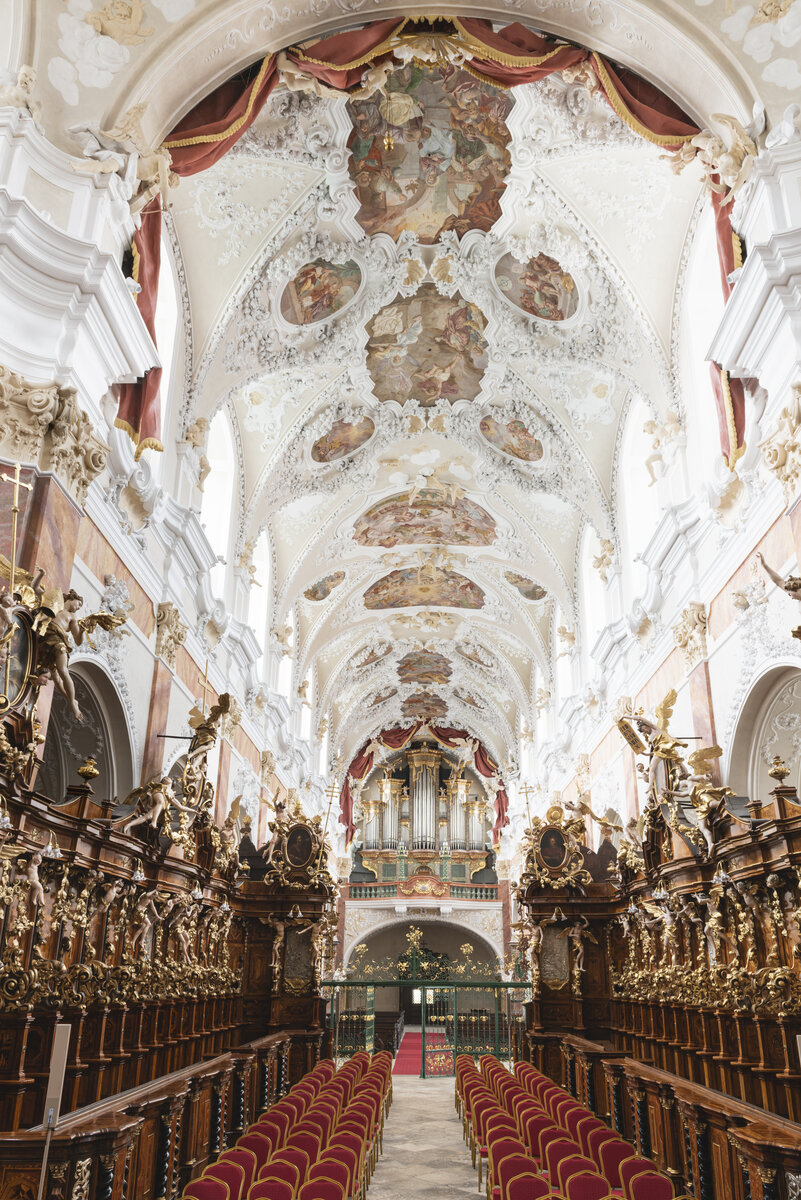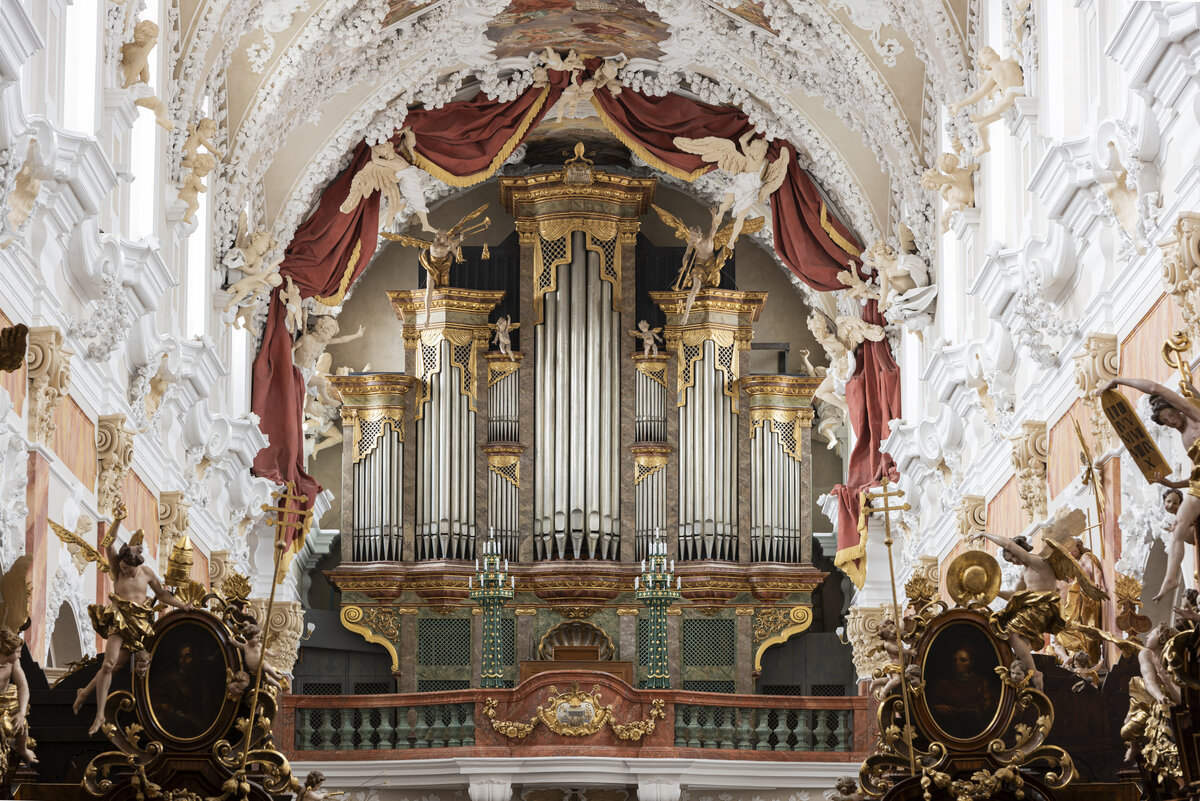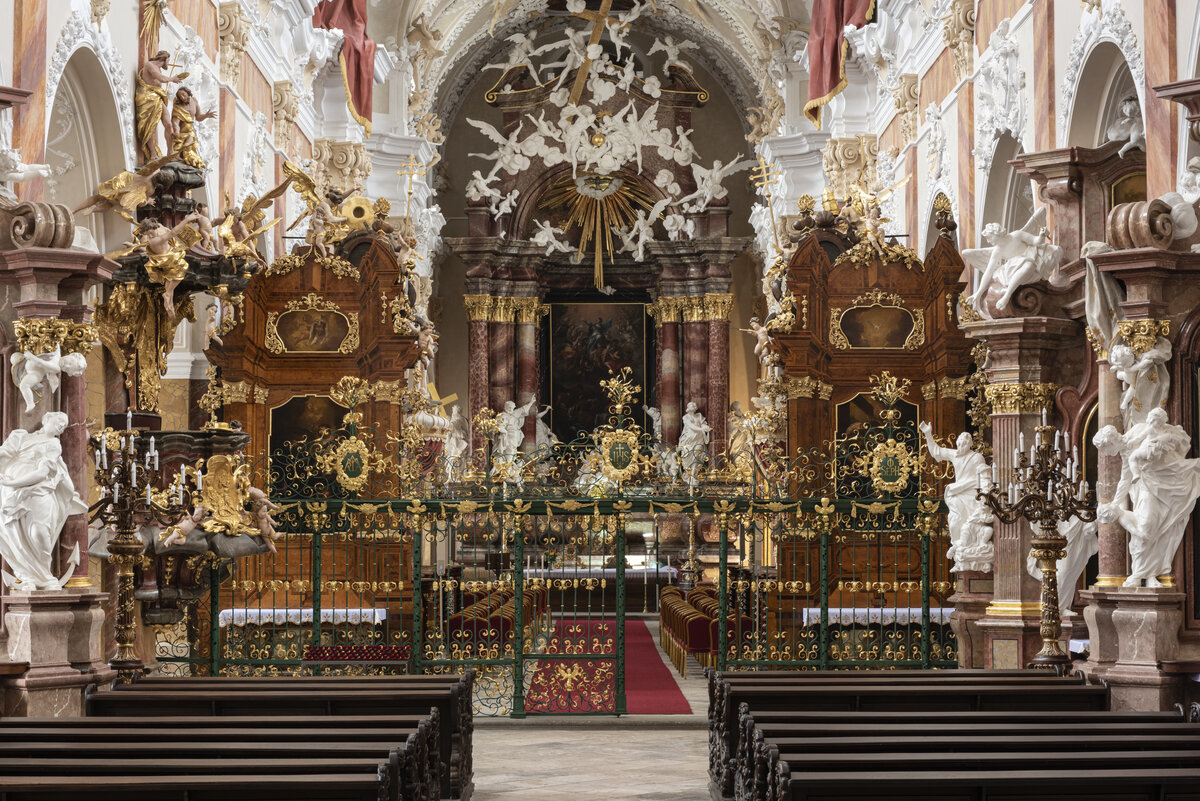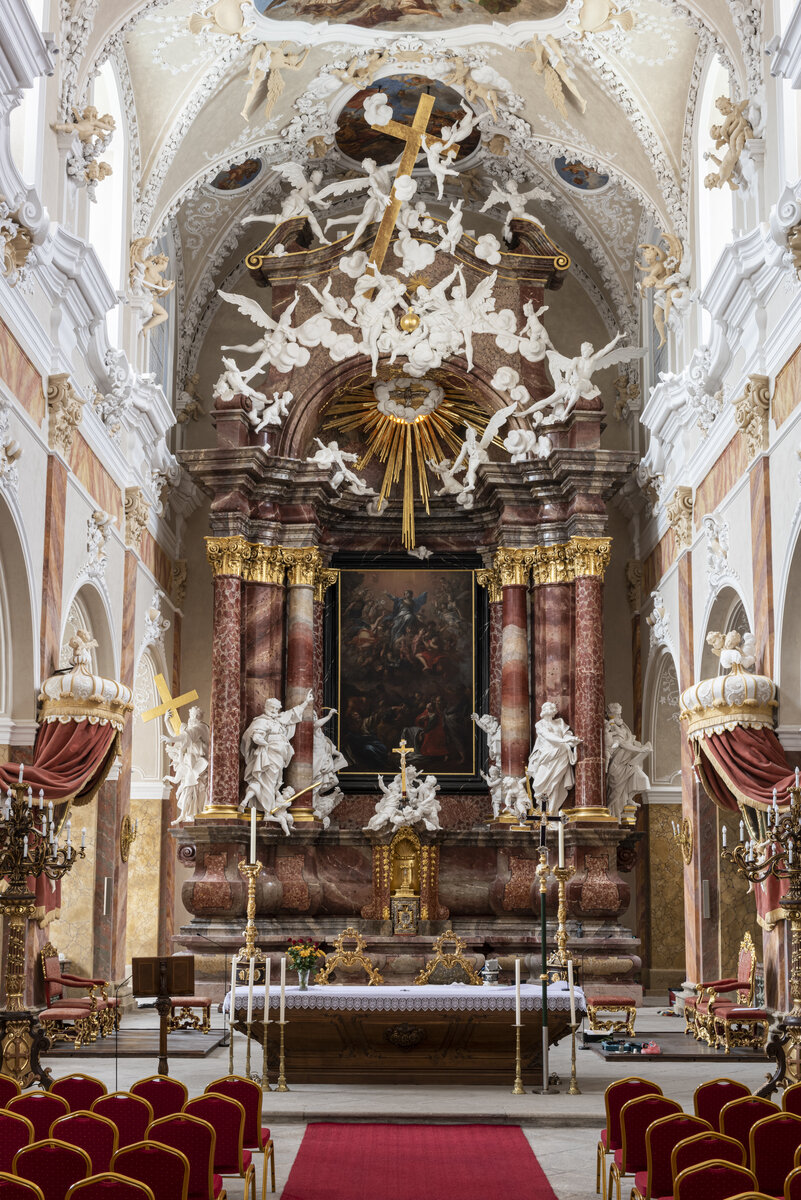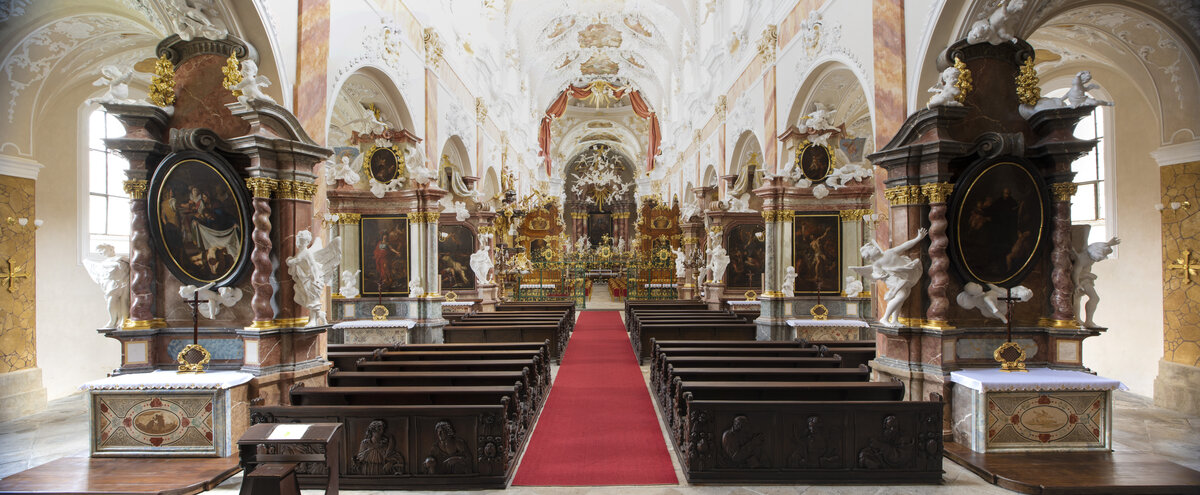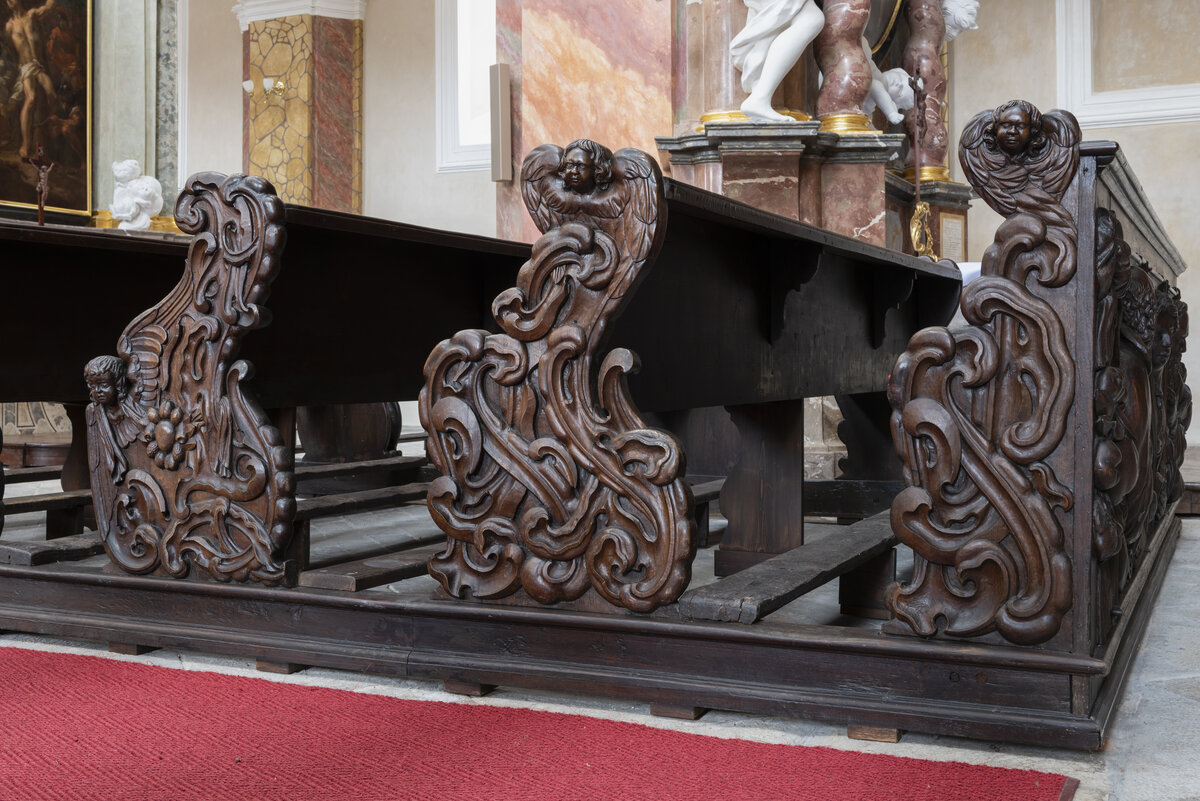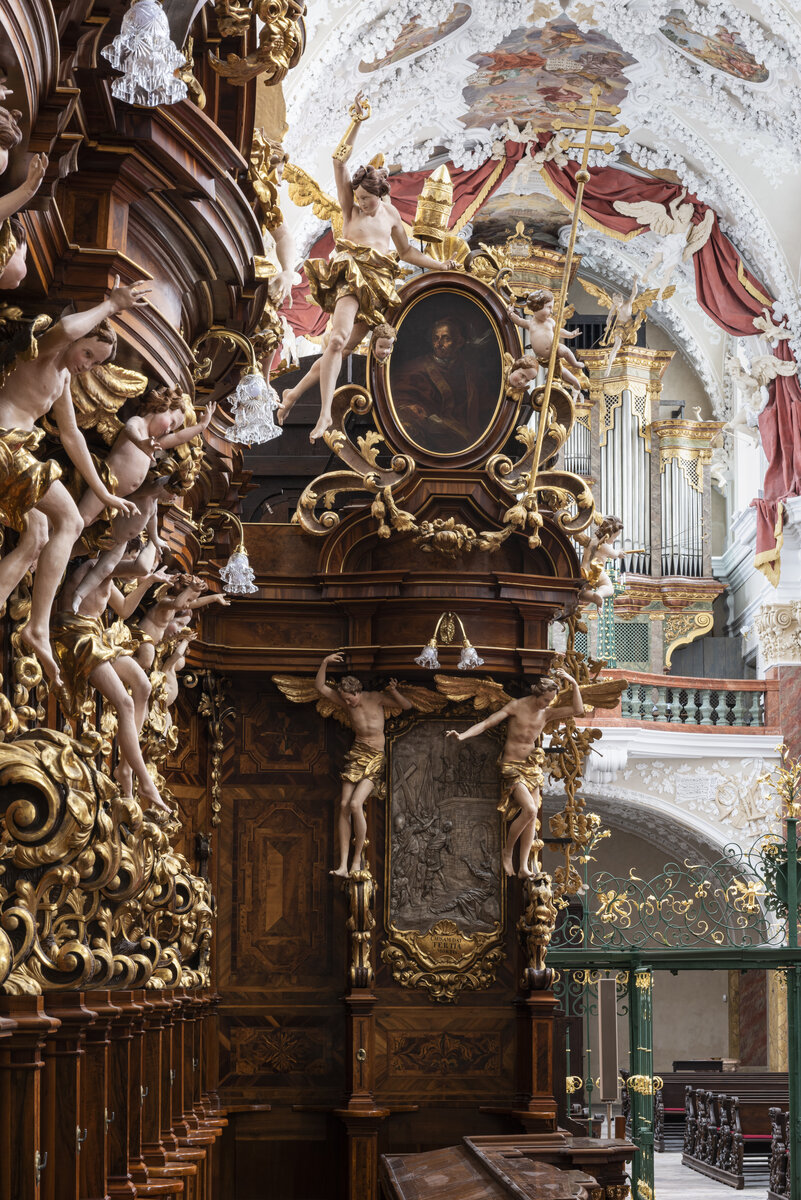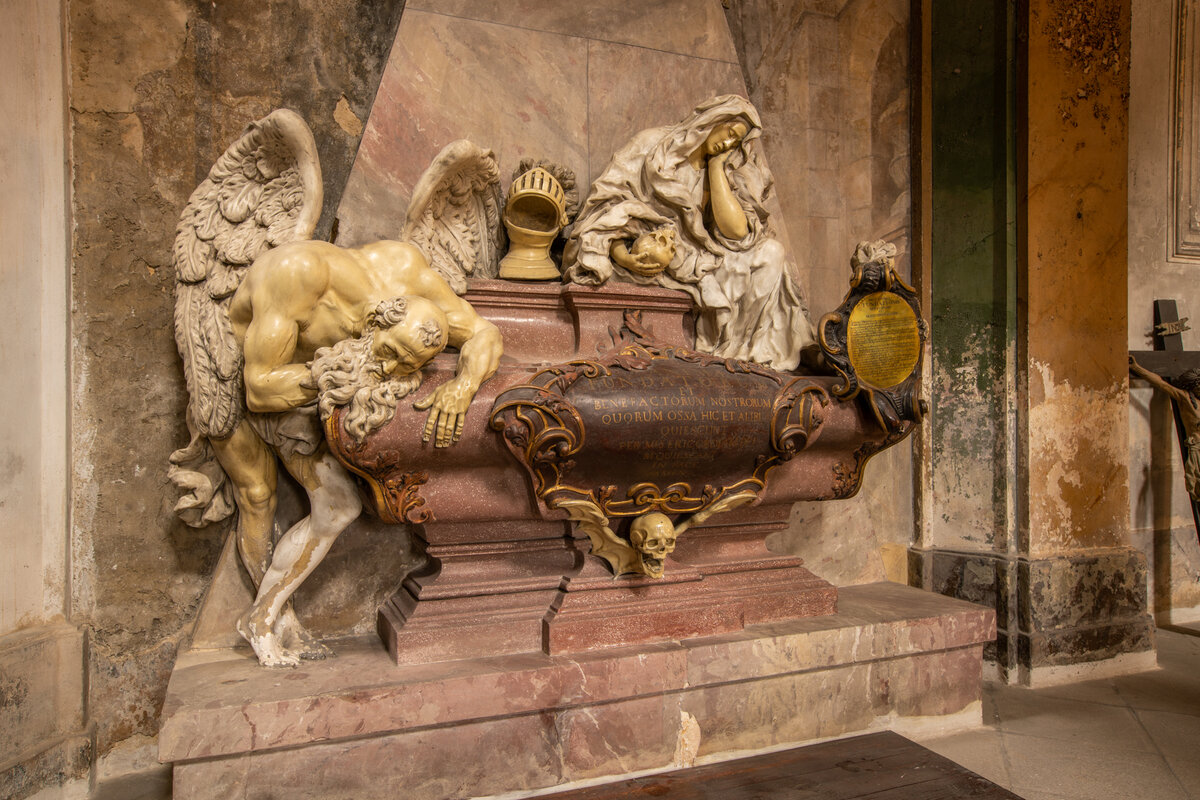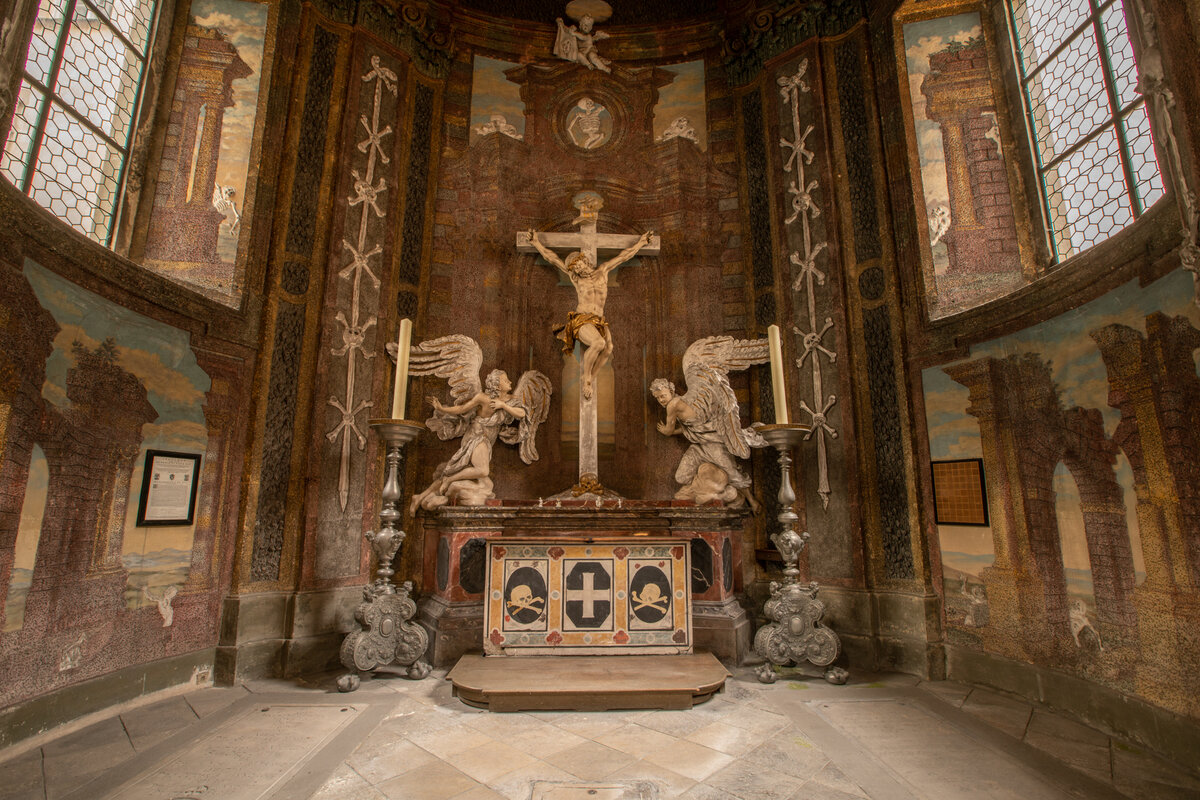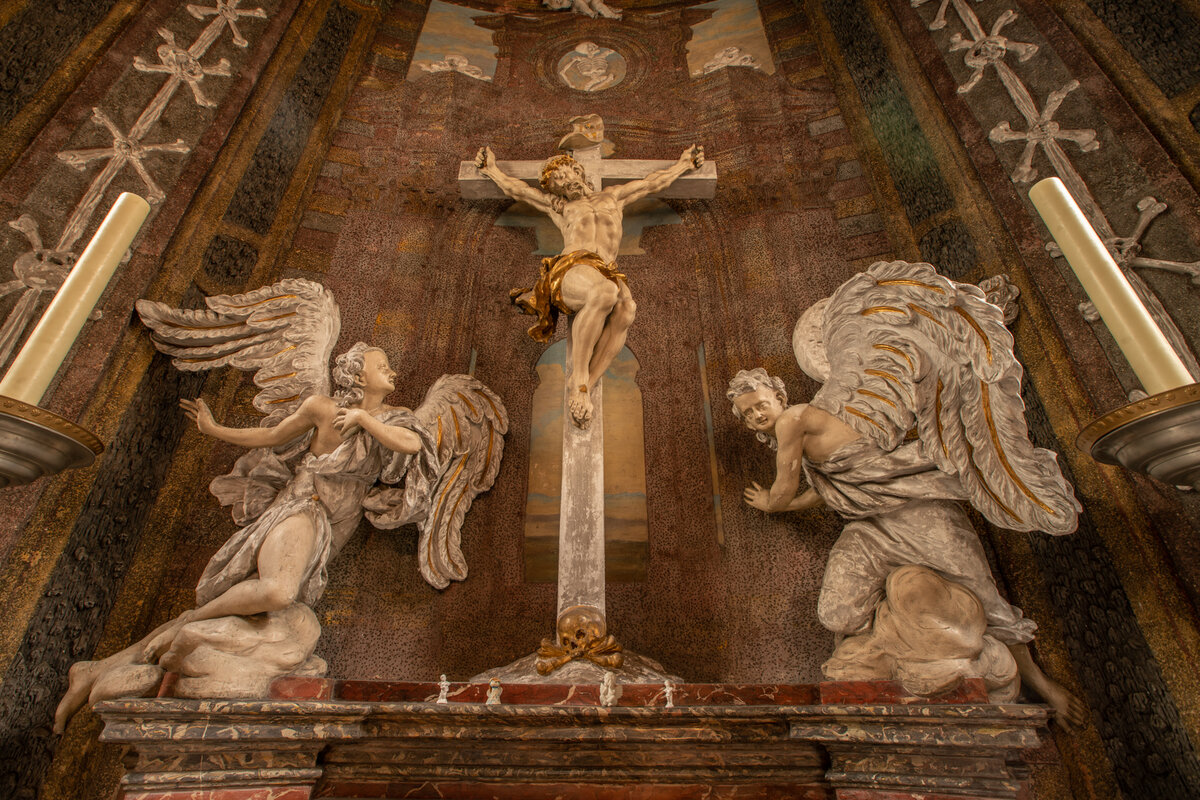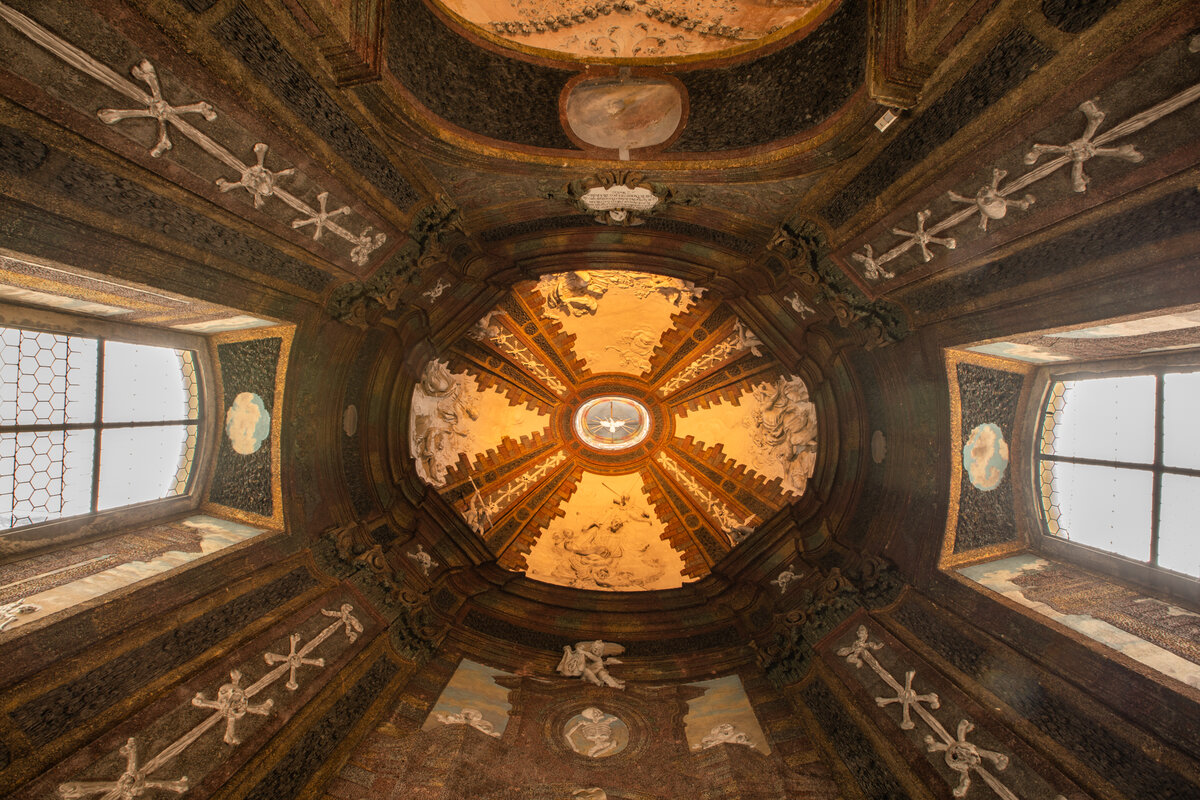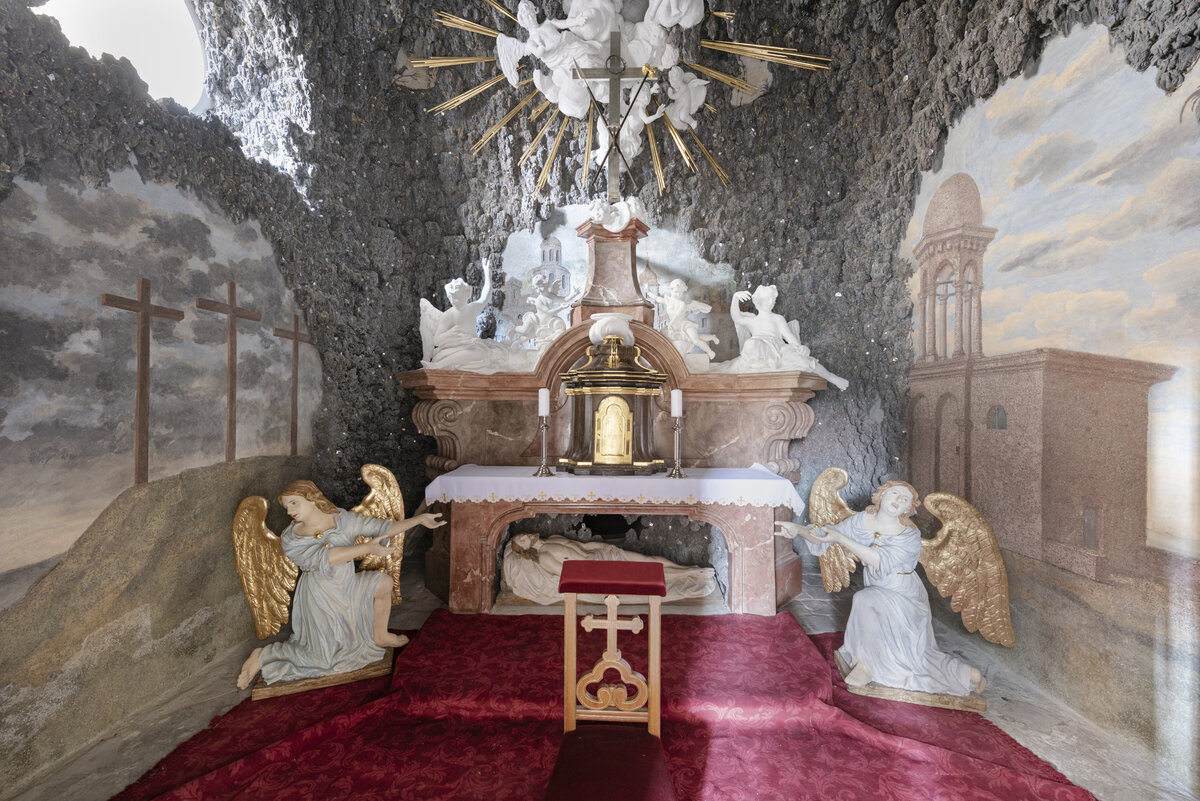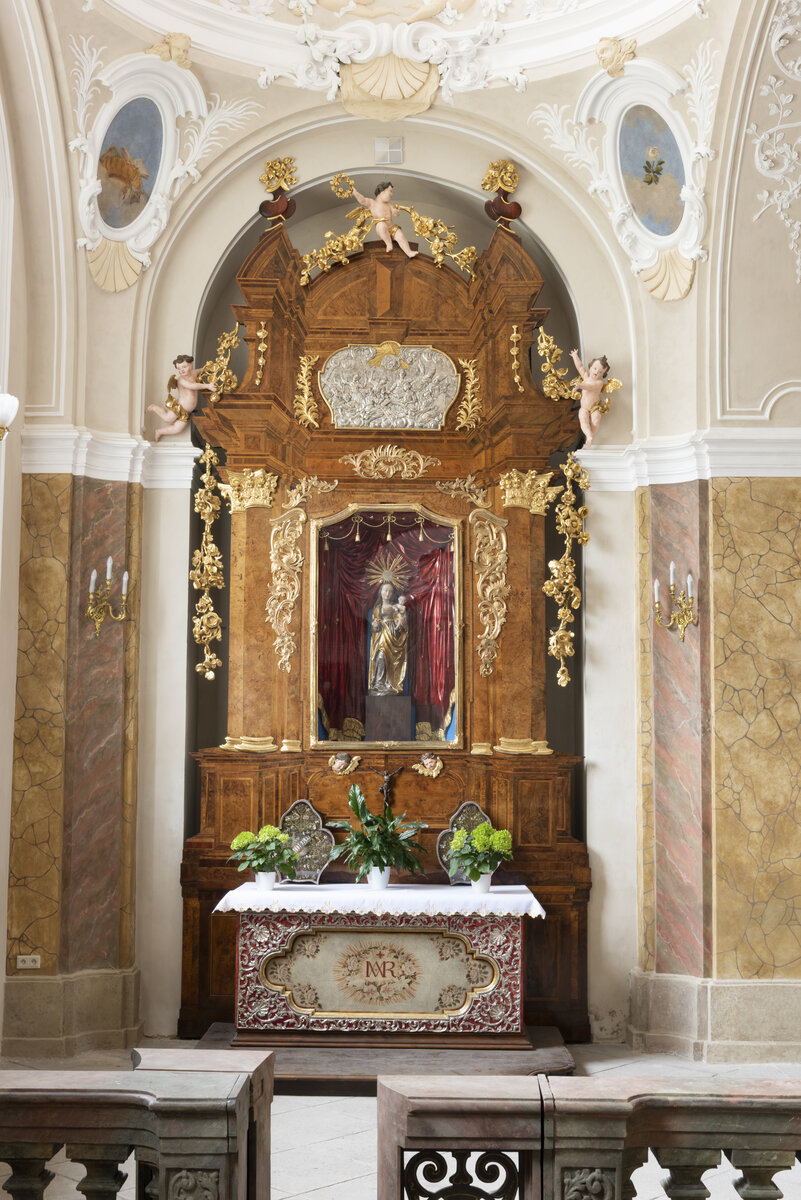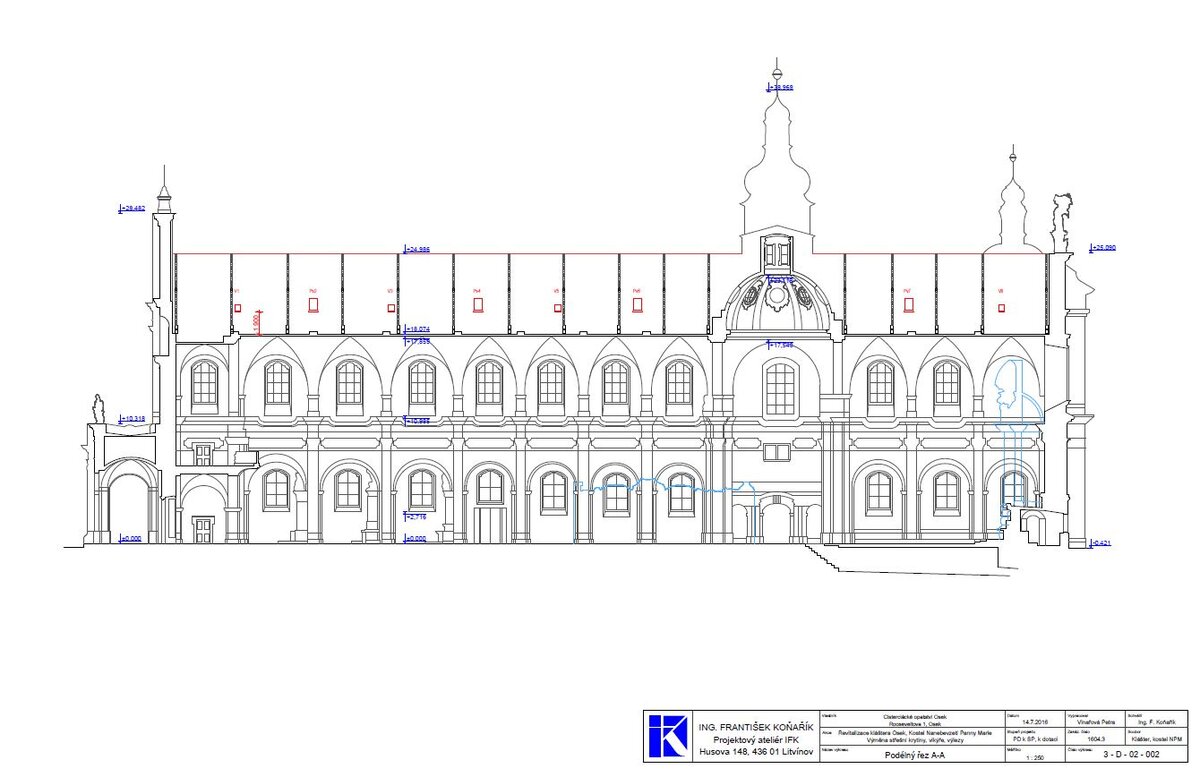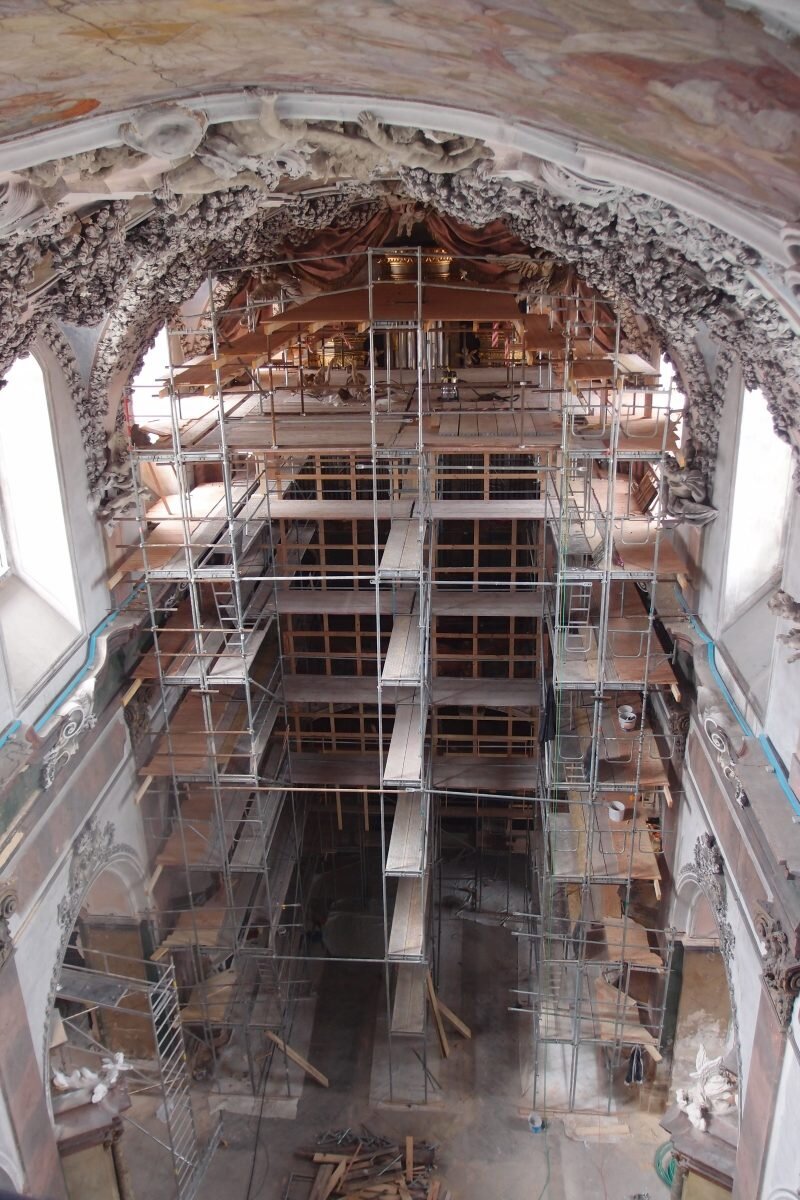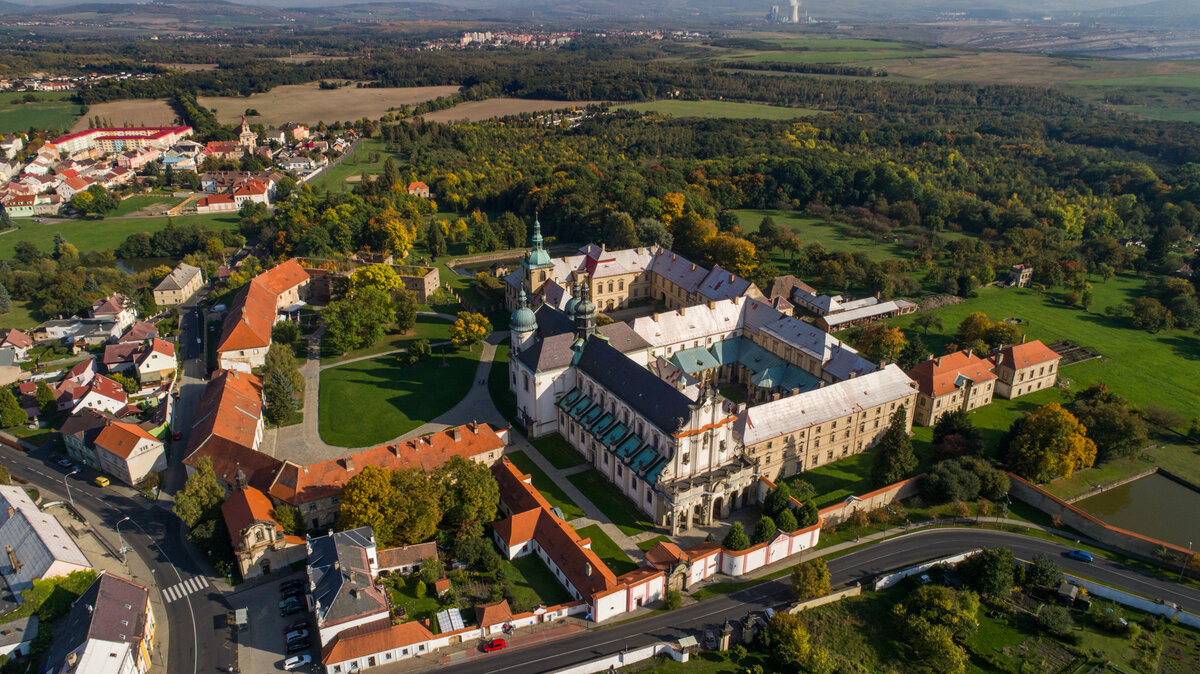| Author |
Ing. František Koňařík, spolupráce: Jindřich Koska, Milena Nečásková, Tomáš Koňařík, Marek Koňařík, Pavel Siváň, Jan Jiruška, Pavel Dolanský, Petr Vlček, Roman Souček, Jindřich Jirsa, Adéla Hoblíková |
| Studio |
Ateliér IFK Litvínov |
| Location |
Rooseveltova 1, Osek, Ústecký kraj, Česko |
| Investor |
Cisterciácké opatství Osek, Rooseveltova 1, 417 05 Osek IČ:49086910 |
| Supplier |
- |
| Date of completion / approval of the project |
January 2022 |
| Fotograf |
Mrg. Jan Peer |
The Baroque pearl of Northern Bohemia is the monastic church of the Assumption of the Virgin Mary in Osek, which is the most valuable monument of the Cistercian monastery complex, which acquired its present form in the 17th century during the Baroque reconstruction under the leadership of the prominent architect Antonio Octavius Broggio.
The church was in a state of disrepair. The condition of the stucco, wall and ceiling painting and plastic decoration of the transept of the church was dilapidated on all surfaces. Individual parts of plaster and stucco came loose from the decorations, which fell off even during religious services, apparently due to long-term leakage. The painting was peeling, the church was gloomy and dark.
After the restoration, the interior returned to its original baroque colors.
In the interior of the church, the repair of stucco decoration of plaster, stucco and especially artificial marble was probably the most complex and demanding. The stucco was cleaned, missing parts were added, and the rich fresco decoration was also cleaned and retouched.
It also included the repair of the chapels of the Holy Cross and the Holy Sepulchre. Unique here is the decoration, which is partly made of mica, and its use was not common at the time.
Experts also restored paintings, altars, holy water font, organ, pavement and furniture. A new electrical installation was installed.
Scaffolding was standing in the interior throughout the repair period, the work was divided into stages and took place from top to bottom on the entire church and above the presbytery.
The covering of the entire church was replaced. The covering consists of natural slate, which was there originally.
The preparatory stages for the repair began in 2018 and the opening of the church to the public took place in 2022. The monument was closed for repairs. Since its opening, services have been held on Sundays. The church offers a sightseeing tour.
The monastery brewery, where Ossegg monastery beer is brewed, has also been restored in the monastery grounds. The brewery operated here from 1701 to 1946.
The church was declared a national cultural monument in 1995.
The monastery brewery, where Ossegg monastery beer is brewed, was also restored on the monastery grounds. The brewery operated here from 1701 to 1946.
MVDr Jindřich Koska takes care of the monastery and brewery.
The revitalization included the following partial works:
- Restoration of vaults and walls of the 3rd and 2nd levels, walls, columns, stationary (side altars...) including the staircase to the choir and furniture
- Restoration of paving in the interior
- Organ restoration, disassembly and restoration of pipe stock, machine and cabinet, reassembly, adjustment, intonation and tuning
- Replacement of roofing
- Fire safety solutions - Environmental technology - Restoration of electrical installation
- Landscaping
All restoration preparations are natural materials and therefore fully recyclable.
Persons who participated in the implementation:
Ing. František Koňařík - authorized engineer in the field of building construction - chief designer, supervision during construction implementation.
The IFK studio invited the following specialists and experts to cooperate:
- electrical installation - Ing. Jan Jiruška, AST studio
- construction and structural part and statics - Ing. Pavel Dolanský, Dopac, s.r.o.
- electrotechnical communication (sound system, EZS, EPS) - Petr Vlček
- architectural and construction solutions and drawing of all situations - Roman Souček
- lightning rod protection and grounding - Jindřich Jirsa
- architect - supervision of architectural and construction solutions - Ing. arch. Tomáš Koňařík
- graphic designer - IT service with supervision over computer technology and the management itself - Mgr. Marek Konarík
- assistant to the chief designer – Adéla Hoblíková
- restoration work - SPECTEC Group s.r.o. company
- restoration work - Brandl s.r.o. company - - academic painter RNDr. Milena Nečásková
- roof, paving and electrical - company IVPS, Inženýrská výstba a zvědné stavby s.r.o. - Ing. Pavel Sivan
The client was the Cistercian Abbey of Osek, whose statutory representative is dr. Jindřich Koska.
He managed to include the Church of the Assumption of the Virgin Mary (SO 203) in the IROP program with co-financing of the entire project from European funds. The investment costs were 130,000,000 CZK / 5,362,630 EUR, while the financial breakdown was 85% EU, 10% CR and 5% owner.
The church was built between 1207 and 1221 as a three-nave Romanesque basilica. Between 1711 and 1720, a highly baroque reconstruction took place. According to the National Monument Institute, the church is one of the most valuable sacred buildings in Northern Bohemia.
Green building
Environmental certification
| Type and level of certificate |
-
|
Water management
| Is rainwater used for irrigation? |
|
| Is rainwater used for other purposes, e.g. toilet flushing ? |
|
| Does the building have a green roof / facade ? |
|
| Is reclaimed waste water used, e.g. from showers and sinks ? |
|
The quality of the indoor environment
| Is clean air supply automated ? |
|
| Is comfortable temperature during summer and winter automated? |
|
| Is natural lighting guaranteed in all living areas? |
|
| Is artificial lighting automated? |
|
| Is acoustic comfort, specifically reverberation time, guaranteed? |
|
| Does the layout solution include zoning and ergonomics elements? |
|
Principles of circular economics
| Does the project use recycled materials? |
|
| Does the project use recyclable materials? |
|
| Are materials with a documented Environmental Product Declaration (EPD) promoted in the project? |
|
| Are other sustainability certifications used for materials and elements? |
|
Energy efficiency
| Energy performance class of the building according to the Energy Performance Certificate of the building |
|
| Is efficient energy management (measurement and regular analysis of consumption data) considered? |
|
| Are renewable sources of energy used, e.g. solar system, photovoltaics? |
|
Interconnection with surroundings
| Does the project enable the easy use of public transport? |
|
| Does the project support the use of alternative modes of transport, e.g cycling, walking etc. ? |
|
| Is there access to recreational natural areas, e.g. parks, in the immediate vicinity of the building? |
|
